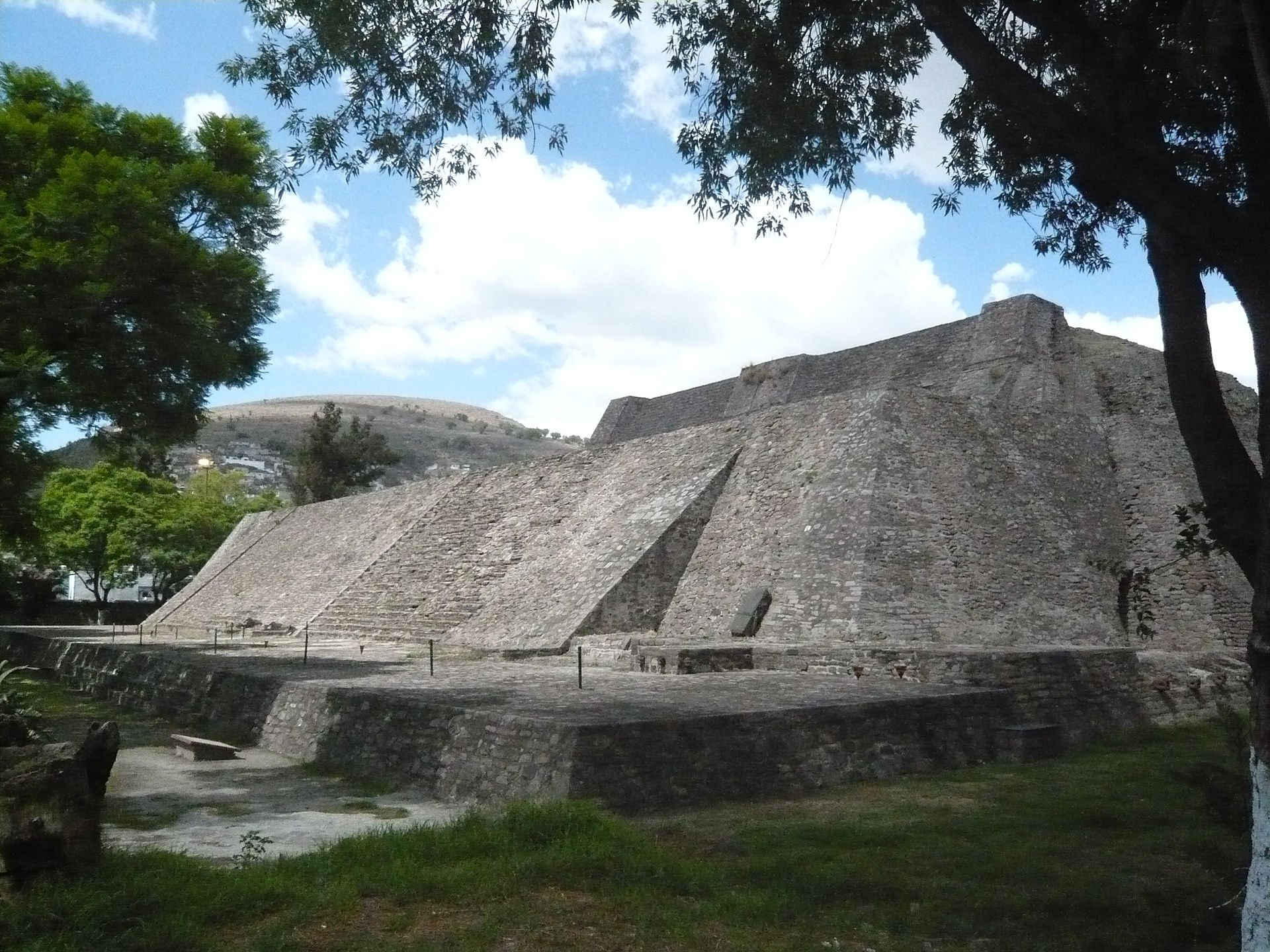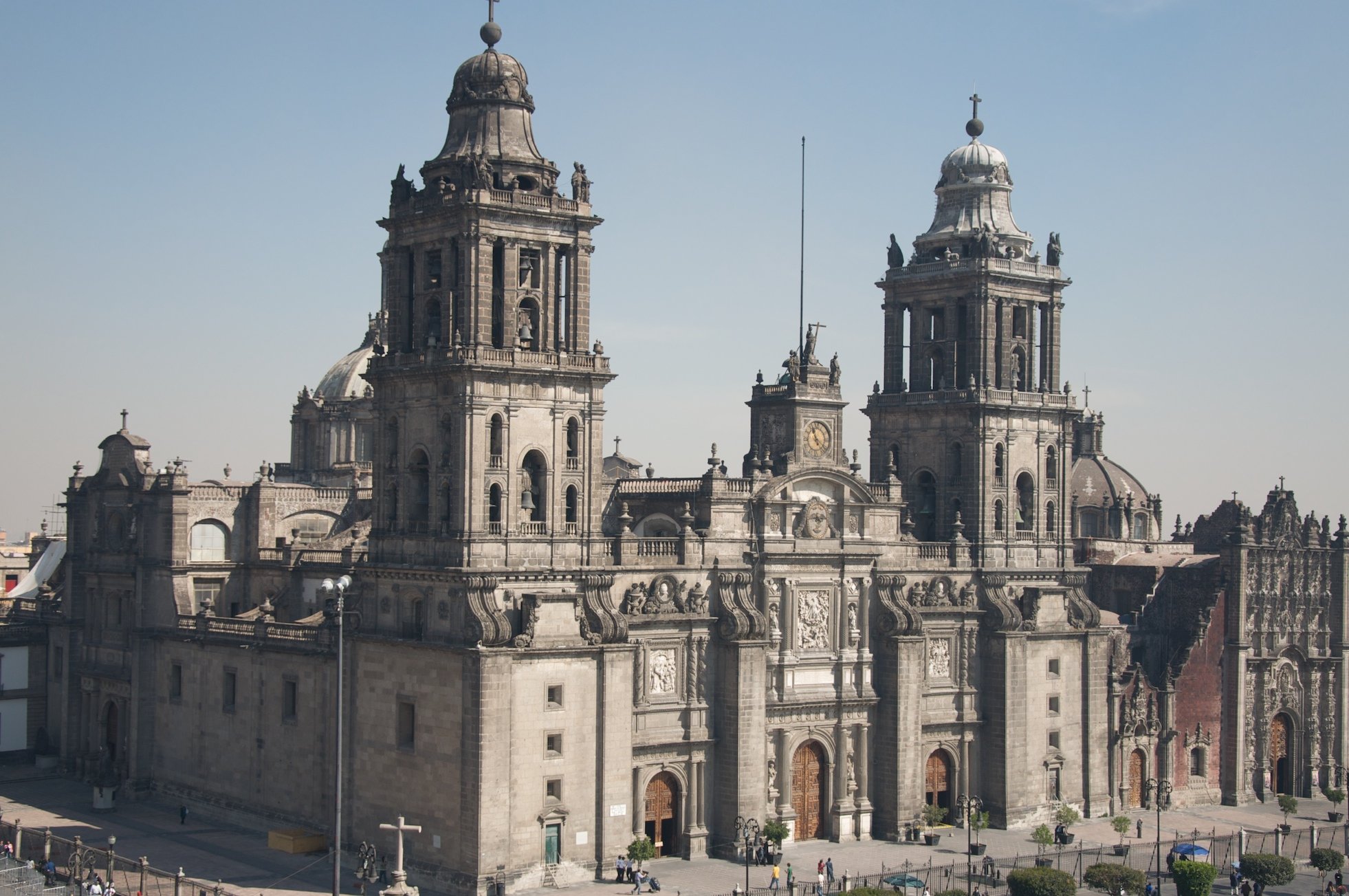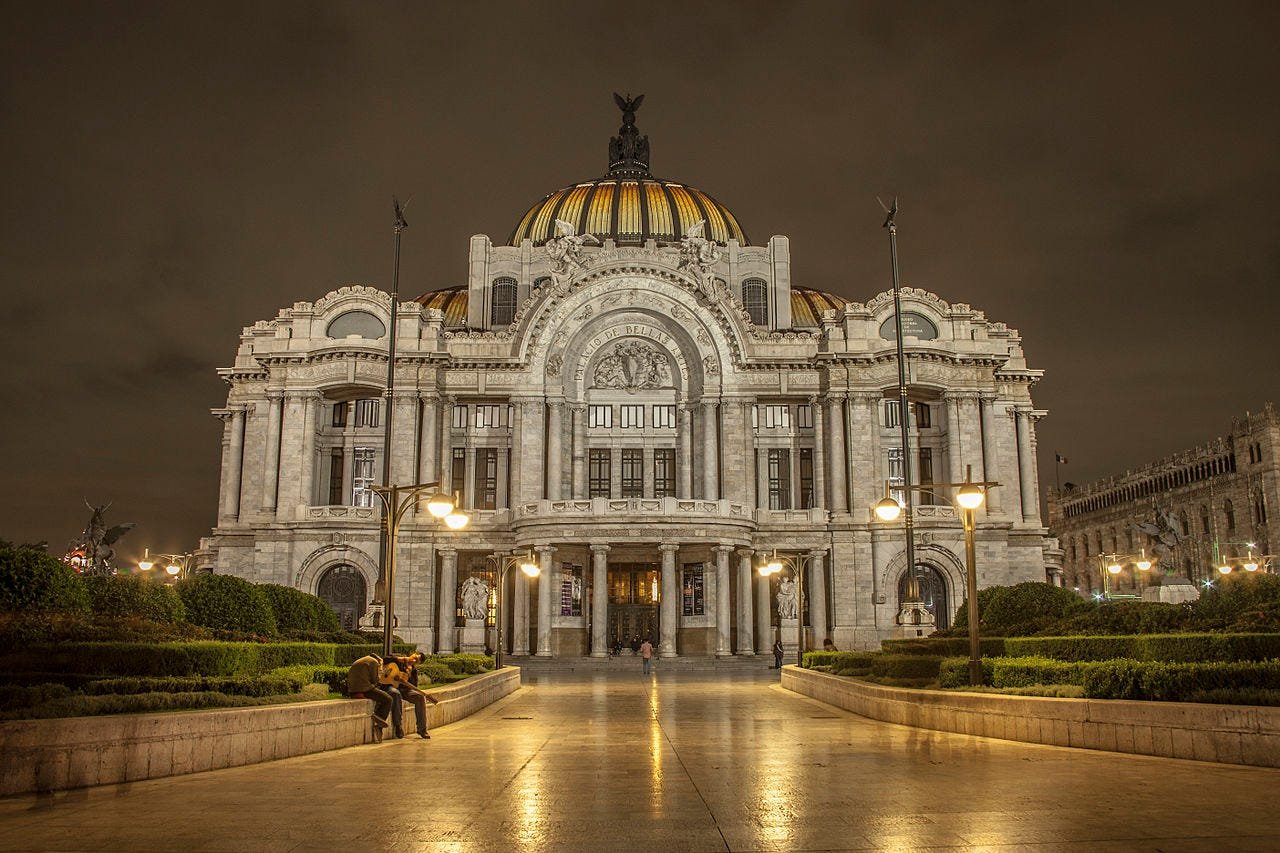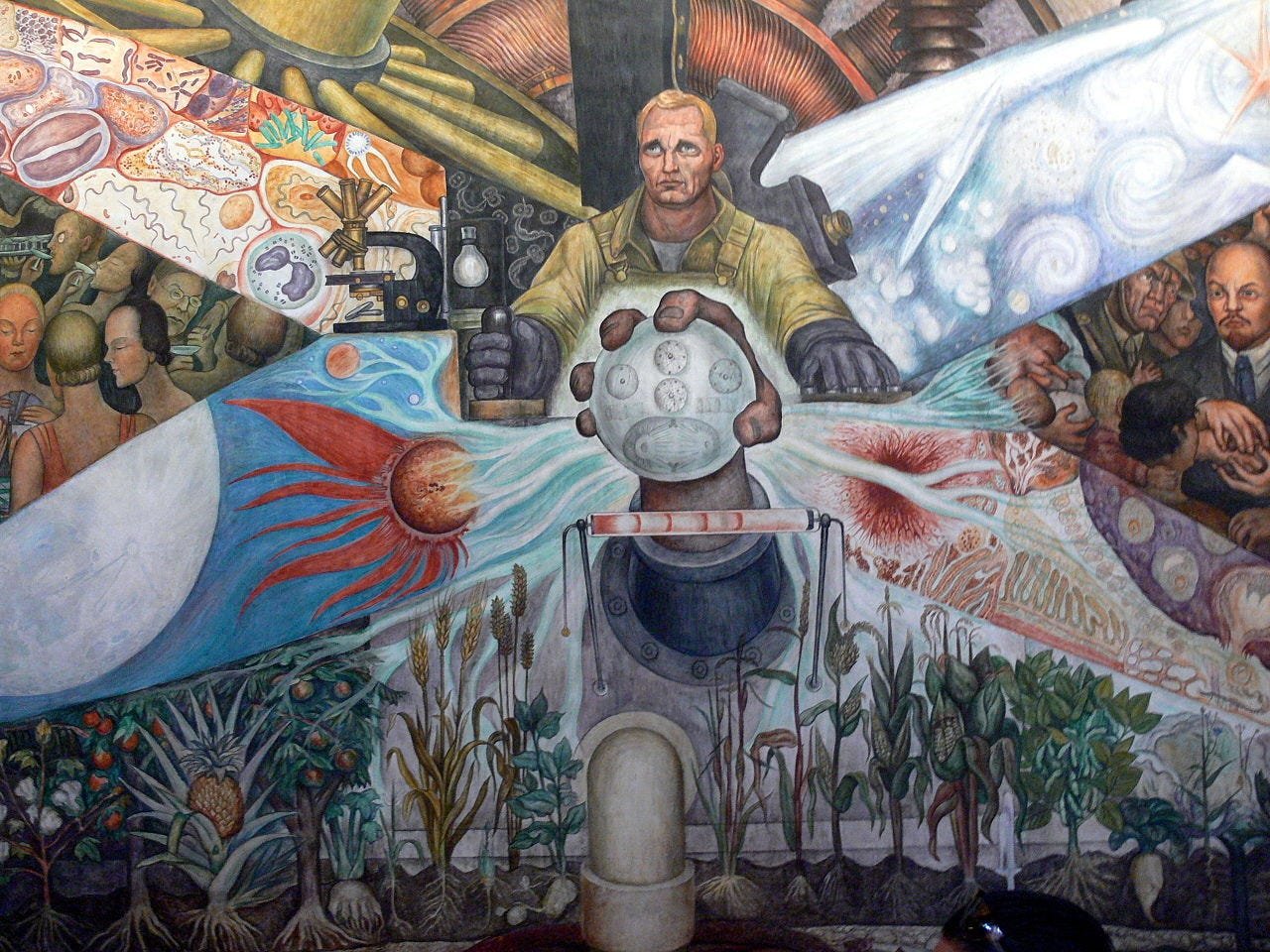Mexico City—3 Historical Places to Visit
Origins: The Aztec Empire
A leader of the Mexica (indigenous peoples and rulers of the Aztec Empire) had a vision of an eagle holding a snake and was instructed to look for a sacred site.
An eagle devouring a snake perched on a cactus appeared along Lake Texcoco and in 1325 the Mexica founded their permanent base Tenochtitlan (present-day Mexico City). This sacred symbol of an eagle holding a snake in its beak was used as the emblem for the city and can still be seen today on the Mexican flag. The city state of Tenochtitlan partnered with two nearby city states and became the capital.
The Aztec Empire controlled most of central Mexico at its height until 1521 when the Spanish overtook the city by force.
Ruins from the Aztec Empire can be seen in several parts of Mexico City including in the heart of the city at the Temple Mayor. But in the northern suburbs a well preserved pyramid from the Aztec Empire remains. And that brings us to our first building.
1. Tenayuca
In the northern suburbs of Mexico City sits the Aztec pyramid of Tenayuca.
Originally founded by the Chichimec tribe (semi-nomadic peoples of Mexico), Tenayuca was settled around 1224 and the first temple built shortly after. In the 14th century the nearby Aztecs conquered Tenayuca and added their style to the pyramid. The original building style had vertical walls while the Aztec building style included sloping tiers of the pyramid.
The Aztec pyramid of Tenayuca
Better preserved than the Aztec ruins in the city center, Tenayuca has a wall of serpents that can be seen on three sides of the pyramid. These serpents were associated with fire and sun worship. The double pyramid is 203ft (62m) wide by 170ft (52m) deep.
The Spanish called Tenayuca the town of the serpents and it was abandoned sometime after the Spanish conquest and rediscovered in 1925.
This brings us to our first Spanish building.
2. Metropolitan Cathedral
Back in the heart of the city center sits the cathedral church of the Roman Catholic Archdiocese of Mexico.
The church was built directly on top of a former Aztec sacred site to establish dominance and consolidate power over the conquered territory. The builders used stones from the sacred Aztec temples and construction began in 1573. Built over 250 years, it includes Gothic, Baroque, and Neoclassical architecture as the different building styles came into fashion over the years.
Metropolitan Cathedral - Sam Beebe CC 3.0
One of the largest cathedrals in all of North America it measures 420ft (128m) long by 194ft (59m) wide and rises 220ft (67m) high.
The first church on the site was elevated to cathedral by King Charles V, Holy Roman Emperor. The church was modeled after Jaén Cathedral in Andalusia Spain and designed by Spanish architect Claudio de Arciniega.
It is another European architect that brings us to our third building.
3. Palacio de Bellas Artes (Palace of the Fine Arts)
Originally designed by Italian architect Adamo Boari with construction beginning in 1904.
The Palacio de Bellas Artes was completed in three decades and built over a previous 19th century theater. But the earliest building on the site was a church built in 1680. And during this construction a snake-shaped sacrificial alter of Aztec origins was uncovered.
Today this cultural center is made of a mix of architectural styles.
Palacio de Bellas Artes at night - Jptellezgiron CC 3.0
The exterior made of white carrara marble is primarily in the Art Nouveau style while the interior is mostly Art Deco style. Inside murals can be seen from famous Mexican muralist painters like Diego Rivera and Siqueiros. Including a controversial mural by Diego Rivera originally intended for the Rockefeller Center in 1933.
Man at the Crossroads - Wolfgang Sauber CC 3.0
This mural ‘Man at the Crossroads’ by Rivera at Rockefeller Center was controversial for its inclusion of Lenin and the incomplete painting was destroyed. Rivera recreated this mural at the Palacio de Bellas Artes one year later.
The Palacio de Bellas Artes is a cultural landmark and hosts performances of arts and culture.
Present Day
Now one of the world’s largest cities the City of the Palaces is a vibrant arts hub with a rich history.
If you’re planning a trip to Mexico City and interested in staying in a historic spot check out the hotel below.
Historic Hotel - Downtown Hotel, Mexico City
In the city center, this historic hotel was a former 17th century palace. Downtown Hotel is within two blocks of the historic city center, El Zocalo and celebrates its storied past.
Deep dives
To learn more about the Aztecs check out Fifth Sun: A New History of the Aztecs by Camilla Townsend.
And for a more general history check out the History of Mexico: A Captivating Guide to Mexican History by Captivating History.
If you’d rather listen to the history of Aztecs check out The Fall of Civilizations podcast The Aztecs - A Clash of Worlds.
*As an Amazon Associate I may earn a small commission from qualifying purchases at no extra cost to you.





